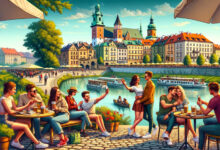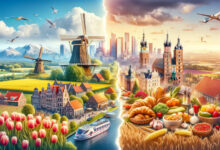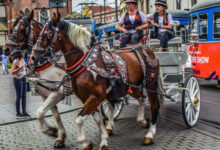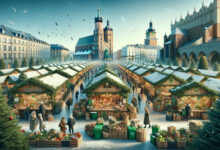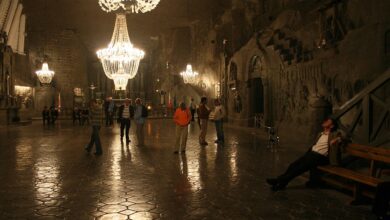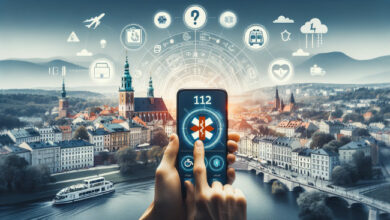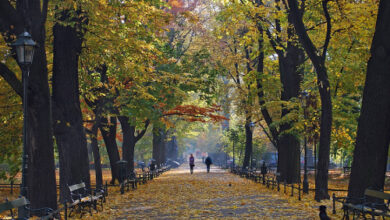Everything You Need to Know Before Visiting Poland: Essential Tips
Poland, with its rich history, diverse culture, food, and stunning landscapes, has increasingly become a popular destination for travellers worldwide. Before embarking on a journey to this beautiful country, it is essential to familiarise oneself with some of the crucial aspects of Polish culture and customs.
Being prepared with knowledge beforehand will not only facilitate a smooth trip but also enable travellers to make the most out of their stay.
The country boasts vibrant cities like Warsaw, Gdansk and Krakow, which exhibit an intriguing blend of contemporary life and historical significance.
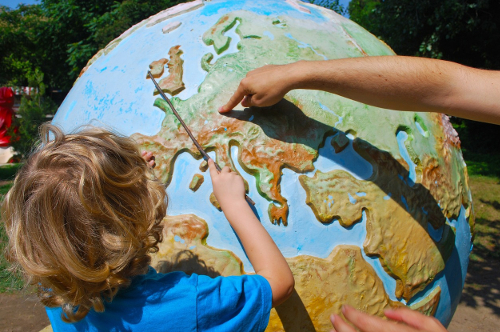
Each city has its unique charm, offering marvellous attractions, such as Warsaw’s tumultuous past and vibrant future, Gdansk’s colourful old town, and Krakow’s scenic beauty and architectural treasures.
Additionally, Poland offers splendid landscapes and natural wonders, from the sandy beaches of the Baltic Coast to the picturesque peaks of the Tatra Mountains.
Understanding local customs and etiquette is an essential aspect of travelling to Poland. For example, it is customary to bring an odd number of flowers to a Polish date and remove one’s shoes when entering a Polish household.
Familiarity with some basic Polish phrases and greetings can also enhance the travel experience, as locals generally appreciate tourists who make an effort to speak their language. Armed with a solid understanding of the local culture, travellers are guaranteed an exceptional and memorable sojourn in Poland.
Table of Contents:
Essential Information about Poland
Passport and Visa Requirements
Travellers to Poland must have a valid passport with at least three months remaining validity beyond their planned departure from the Schengen area.
US citizens visiting Poland for tourism or business purposes do not require a visa for stays under 90 days.
However, it is strongly recommended to have at least six months of passport validity.
Non-EU citizens should check their country’s specific entry requirements and may need a visa depending on their nationality.
Currency and Cash Management in Poland
The currency in Poland is the Polish Zloty (PLN), not the Euro. It is essential to be aware of the exchange rates when travelling to Poland.
While in the country, it is recommended to have some cash on hand, as smaller businesses and rural areas may not accept credit cards.
Currency exchange is possible at banks and exchange offices, but it is advisable to avoid airport and train station currency exchange counters due to their higher rates.
For entering Poland, there are currency restrictions of carrying more than 10,000 euros or its equivalent in another currency.
Weather Conditions
Poland has a temperate climate, with cold winters and mild summers.
Winter temperatures can drop below freezing, while summer temperatures typically range from 20°C to 27°C. It is advised to pack clothing appropriate for the season as well as waterproof items, as rain is common throughout the year.
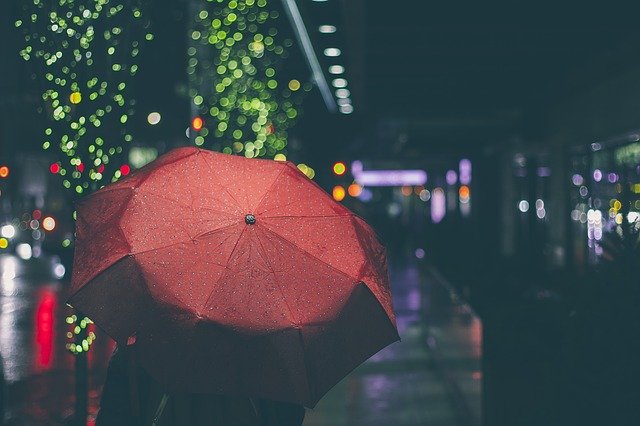
Travelling during the shoulder seasons of spring and autumn can provide more comfortable temperatures and fewer crowds at popular tourist sites.
While visiting Poland, it’s important to be aware of local laws and ensure appropriate medical insurance coverage.
Tap water is safe to drink but it is not customary to do so in public.
For affordable dining options, look for milk bars or “bar mleczny” – these are canteen-style restaurants with homemade meals at low prices.
Read also articles:
Poland’s Historical and Cultural Highlights
Famous Cities and Towns
Warsaw is Poland’s capital and largest city, offering a blend of historic and modern architecture. Key attractions include the Royal Castle, the Warsaw Rising Museum, and the picturesque Old Town.
Kraków, a UNESCO World Heritage site, is known for its enchanting medieval city centre, with landmarks such as Wawel Castle and St. Mary’s Basilica.

Wrocław charms visitors with picturesque market squares, Gothic-style cathedrals, and the famous Racławice Panorama painting. Gdańsk, a beautiful port city on the Baltic Sea, showcases colourful houses, medieval architecture, and the iconic Gdańsk Crane.
Other must-see cities and towns in Poland are Poznań, Łódź, Białystok, and Szczecin.
World War II History and Auschwitz
Poland has a rich and complex history, particularly in relation to the Second World War. The country suffered greatly under Nazi occupation, with millions of its citizens, including Jewish populations, perishing in concentration camps.
The most infamous of these camps is Auschwitz-Birkenau, which has been preserved as a memorial and museum.
It is an essential and sobering visit for anyone interested in understanding the tragedies of the Holocaust and the resilience of the Polish people.
Read also:
Museums and Polish Art
Numerous museums across Poland celebrate its history, culture, and art. In Warsaw, the National Museum features extensive collections of Polish art, while the POLIN Museum provides insights into the centuries-long history of Polish Jews.
Another noteworthy museum is the Schindler Factory Museum in Kraków, focusing on the city’s history under Nazi occupation and the story of Oskar Schindler, who saved the lives of over a thousand Jewish workers during the Holocaust.
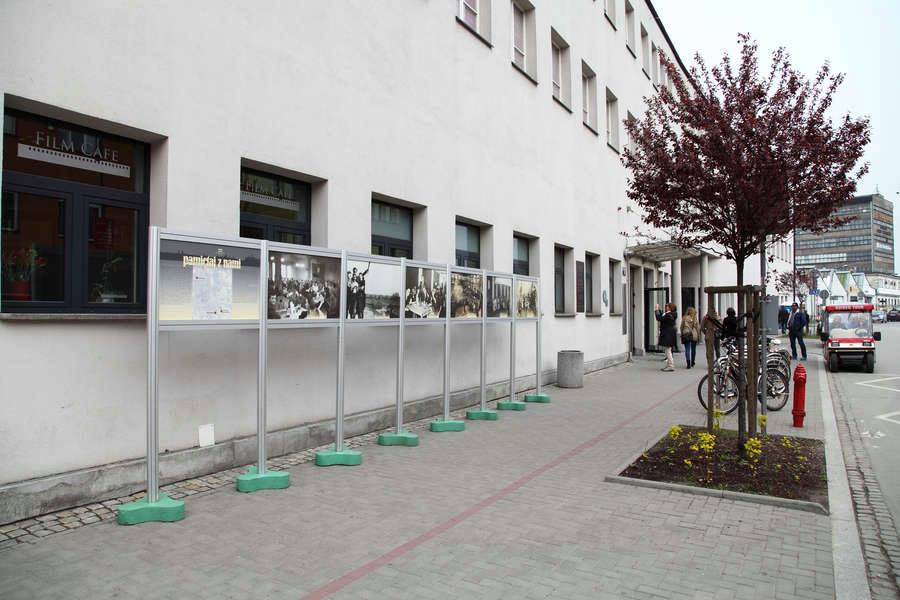
Polish art spans many styles and periods, from medieval castles and churches to avant-garde movements. In Łódź, the Museum of Art showcases an impressive collection of 20th-century modern art.
Moreover, the National Museum in Wrocław houses one of the largest collections of European art in Poland, with works dating back to the 14th century.
Read also:
Polish Cuisine and Local Delicacies
Unique Polish Dishes
Traditional Polish cuisine offers a range of delicious and hearty dishes. Some of the must-try foods include:
- Pierogi: Probably the most famous Polish delicacy, pierogi are dumplings typically filled with ingredients like potatoes, cheese, meat, mushrooms, or fruit.
- Bigos: Also known as ‘hunter’s stew’, bigos is a dish made from sauerkraut, fresh cabbage, and a variety of meats.
- Borscht: A popular beetroot soup, often served with sour cream and sometimes enjoyed with small dumplings called ‘uszka’.
- Gołąbki: These cabbage rolls are made with minced meat and rice, wrapped in cabbage leaves and baked in a tomato sauce.
Vodka, Beer, and Alcohol Culture in Poland
Poland has a rich history of alcohol production and consumption. Vodka is the most famous and traditional Polish spirit, often enjoyed neat and chilled. It is not uncommon to find flavoured vodkas, such as żubrówka (bison grass vodka), cherry, or hazelnut.
For an even more more personalized and unusual experience, try a private vodka tasting tour.
Polish beer is also popular, with both large breweries and a growing craft beer scene offering a range of lagers, ales, and stouts. Drinking alcohol is deeply ingrained in Polish culture, and you’ll often find locals toasting to various occasions with a shot of vodka or a pint of beer.
Read also:
Restaurants and Bars
When visiting Poland, you will find a wide range of restaurants and bars to suit every taste. Traditional Polish restaurants, known as ‘milk bars‘ or ‘bar mleczny‘, provide a nostalgic and inexpensive dining experience.
These establishments offer casual settings and serve delicious, home-style Polish food that is both affordable and filling.
For a more upmarket experience, contemporary Polish cuisine can be found in fine dining establishments, often combining traditional recipes with modern culinary techniques.
In addition to Polish cuisine, international food options are widely available, and many restaurants and bars have English menus.
Buildings that house these establishments often reflect the country’s rich architectural history, ranging from medieval to modern styles. It is not uncommon, especially in large cities like Warsaw and Kraków, to find charming bars nestled in historic cellars or renovated buildings, creating a unique atmosphere.
When exploring the local delicacies and enjoying Polish cuisine, visitors will find that Poland offers an incredible gastronomic experience that caters to all preferences and budgets.
Navigating the Polish Landscape
Natural Wonders and Parks
Poland is a country gifted with diverse landscapes encompassing mountains, lakes, and forests.
These natural wonders are preserved in various national parks, such as the Białowieża National Park, which is home to the European bison and the ancient Białowieża Forest.
Outdoor Activities and Tatra Mountains
For those seeking outdoor adventure, Poland offers a multitude of opportunities. In the southern part of the country, the Tatra Mountains attract hikers, climbers, and skiers from across the globe.
The popular resort town of Zakopane serves as a gateway to the Tatras and provides an array of outdoor activities for travellers.

Lakes are also abundant throughout Poland, with the most prominent lake district being Masuria, located in the northeastern region. This area offers a host of water-based activities such as sailing, kayaking, and fishing.
The Tourism Industry and Tailored Experiences
Poland has become an increasingly popular destination for European travellers due to its affordability, rich history, and cultural experiences.
The tourism industry has responded to this trend by offering tailored experiences to cater to the needs of holidaymakers with diverse interests.
From historical city walking tours to wildlife and nature excursions, there is something for everyone in Poland.
Visitors can also enjoy gastronomic adventures through traditional Polish cuisine, experiencing the flavours and culture of this captivating European country.
Polish Customs and Etiquette
Famous Hospitality
Poland is known for its warm and hospitable nature. Poles pride themselves on being helpful and welcoming to visitors, and this extends to inviting people into their homes.
When entering a Polish home, it is customary to remove your shoes and often you will be offered a pair of slippers to wear. It is also polite to bring a small gift, such as a box of chocolates or flowers.
However, when giving flowers, ensure that the number of flowers is odd, as even numbers are reserved for funerals.
Expectations for Foreign Visitors
Foreign visitors are usually well received in Poland. However, it’s essential to familiarise yourself with some basic customs and etiquette to make your visit smooth and enjoyable.
When greeting someone, a firm handshake is customary. Avoid discussing politics and religion, as these subjects can lead to heated debates.
When attending a party or social gathering, punctuality is appreciated, and a gift for the host/hostess is expected. In public places, it is important to speak in a moderate tone and avoid loud conversations.
Rules and Regulations
Before visiting Poland, it’s crucial to understand some of the country’s rules and regulations. Here are a few important ones to keep in mind:
In Poland, it is illegal to consume alcohol in public places such as parks, streets, and public transportation. Drinking is allowed only in designated areas like restaurants, bars, and licensed venues.
- Smoking is prohibited in public spaces, including bus stops, railway stations, and enclosed public areas.
- Riding trams or public buses requires a valid ticket, which can be purchased on-board or at a ticket machine. Remember to validate your ticket inside the vehicle to avoid fines.
- When crossing the street, make sure to use designated zebra crossings and pedestrian traffic signals, as jaywalking is frowned upon and can incur fines.
- While visiting religious sites, be respectful by speaking quietly and dressing modestly. Covering your shoulders and knees is generally considered appropriate.
In conclusion, being aware of Polish customs and etiquette will not only help you feel more comfortable during your visit but will also allow you to enjoy and appreciate the country’s unique culture and hospitality.
Transportation and Accessibility
Public Transportation
Public transportation in Poland is both reliable and efficient. It operates on a unified ticket system, which covers buses, trams, and the underground.
Tickets can be purchased at newsagent kiosks, from the driver (at a surcharge), or from ticket machines on board or at underground stations.
It is also a good idea to purchase The City Pass Krakow Card. With this card you have public transporation for free and also free entrance to more then 36 museums and monuments.
The ticket prices are quite affordable due to Poland’s stable economy, and the cost is usually given in the local currency, złoty. Be mindful that public transport can get crowded during peak hours.
Read also:
Taxis and Car Rentals
Taxis are widely available in Poland, and they are an affordable and convenient means of transportation.
Taxi stands can be found in most cities, and hailing a taxi on the street is a common practice.
However, it is essential to pay attention to the meter, as some taxi drivers may try to overcharge tourists. A tip for a taxi driver is not obligatory but always appreciated.
Another option for getting around is renting a car. Numerous car rental companies operate in Poland, offering a range of vehicles to suit different needs and budgets.
Keep in mind that driving in Poland requires a valid driving licence and other necessary permits, such as an International Driving Permit if you are a non-European Union resident. Ensure that you familiarise yourself with local traffic rules and regulations before hitting the road.
Arriving and Returning
Travelling to and from Poland is quite accessible, with several international airports connecting the country to major destinations around the world.
There are no strict tourist visa requirements for stays under 90 days for most nationalities, and passports should have at least three months remaining validity beyond the planned departure from the Schengen area, with six months being strongly recommended.
Upon arrival, currency restrictions may apply, with any amounts exceeding 10,000 euros needing to be declared on entry. The same rule applies when leaving the country. It is advisable to consult the local customs website for detailed information on any restrictions or limitations that may apply.
Throughout your visit to Poland, communication should not be a significant issue, as English is widely spoken, especially in major cities and tourist areas. However, knowing a few basic Polish phrases will be helpful and can greatly enhance your experience.
Read also:
Budget-Friendly Poland
Thrifty Travel Tips
Poland offers travellers a mix of stunning landscapes, historical landmarks, and affordable destinations. To make the most of your budget, it’s essential to embrace some cost-saving strategies.
First, use cash as much as possible, as Poland predominantly operates on a cash-based economy. Their currency is the Polish złoty, with one US dollar equalling around four złoty.
Opt for cheaper modes of transportation when travelling within Poland. Buses are an excellent alternative to trains, as they offer a more extensive network and are generally less expensive. FlixBus is the main operator and provides stiff competition, allowing you to choose the most affordable route.
When it comes to accommodation, consider staying in less well-known cities like Poznań or opting for budget-friendly options like hostels or guesthouses. You can save money on food by trying some delicious and affordable local dishes from street vendors or shopping at local markets.
Affordable Attractions
Poland is home to a plethora of budget-friendly attractions that cater to a variety of interests. Here are a few affordable destinations to explore:
- Warsaw: The capital city offers the Royal Castle, Lazienki Park, and the Palace of Culture and Science, all of which are either free or have minimal entrance fees.
- Kraków: This historic city is a UNESCO World Heritage site and boasts attractions like Wawel Castle and St. Mary’s Basilica, which offer free entry on certain days.
- Wrocław: Known as the City of a Hundred Bridges, Wrocław features beautiful architecture, charming streets, and a picturesque Old Town Centre that can be explored for free.
- Gdańsk: The port city of Gdańsk is an excellent place to wander, with highlights such as the Gdańsk Crane, Long Market and Oliwa Cathedral, all accessible at no cost.
- Poznań: This underrated gem offers a range of affordable attractions, including the stunning Town Hall, Stary Browar Shopping Centre, and local bars that serve budget-friendly beverages.
By following these thrifty travel tips and exploring the affordable attractions Poland has to offer, you can enjoy a budget-friendly and memorable travel experience.
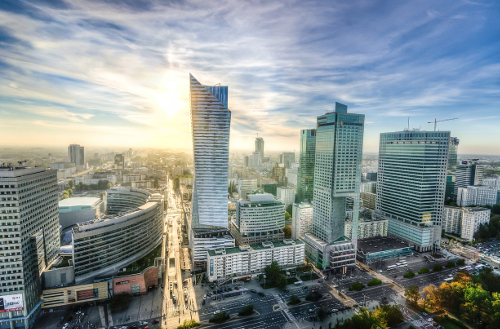
Frequently Asked Questions
Best time to visit Poland?
The best time to visit Poland depends on your preferences. Generally, late spring (May) and early autumn (September) are considered the most favourable months due to pleasant weather and fewer tourists.
However, winter lovers might enjoy visiting Poland during December and January to experience beautiful snowy landscapes and vibrant Christmas markets.
Currency and costs in Poland?
The currency used in Poland is the Polish Zloty (PLN). Poland is known for being relatively affordable compared to other European countries, especially when it comes to accommodation, dining, and public transportation.
Yet, prices may vary depending on the city or region you’re visiting, with Warsaw and Krakow typically being more expensive than smaller towns.
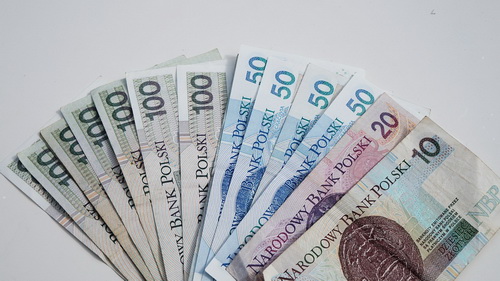
Transportation options?
Poland offers various transportation options for travellers, such as trains, buses, trams, and taxis. The extensive train network, operated by PKP Intercity, connects major cities and towns.
Buses are also widely available and can be more budget-friendly. In larger cities, local trams and buses can be convenient for exploring the urban areas.
Taxis and ride-hailing services like Uber are also available, but make sure to use reputable companies to avoid overcharging.
Popular tourist sites?
Poland has a rich cultural heritage and diverse landscapes, offering numerous tourist sites worth exploring. Some of the most popular destinations include:
- Warsaw, the capital city, with its historic Royal Castle, Lazienki Park, and the atmospheric Old Town.
- Krakow, known for its beautiful Old Town and the historic Wawel Castle.
- The Auschwitz-Birkenau concentration camp, a significant reminder of the Holocaust during World War II.
- Wroclaw, famous for its picturesque Market Square and the unique Wroclaw’s Dwarfs.
- Zakopane, a popular mountain resort in the Tatra Mountains, ideal for hiking and skiing.
Safety and local customs?
Poland is generally a safe country, and tourists can expect a pleasant experience. However, as with any destination, it is essential to take standard precautions such as keeping your belongings secure and being aware of your surroundings. In terms of local customs, some things to keep in mind include:
- Being respectful of religious sites, as Catholicism is the predominant faith in Poland
- Removing shoes when entering a Polish home
- Giving an odd number of flowers as a gift, as even numbers are reserved for funerals or mourning
- Tipping in restaurants, as it is customary to tip around 10% for good service
Food and drink recommendations?
Polish cuisine is hearty and flavourful, with an emphasis on meat, potatoes, and cabbage. Some must-try dishes include:
- Pierogi: Traditional Polish dumplings with various fillings, such as meat, mushrooms, potatoes, or fruit
- Bigos: A flavour-packed stew made from sauerkraut, fresh cabbage, and a variety of meat
- Placki ziemniaczane: Potato pancakes often served with sour cream or applesauce
- Barszcz: A beetroot soup, usually served hot with sour cream and sometimes accompanied by small dumplings called uszka
For drinks, you can try Polish beers or the iconic vodka, which is traditionally served chilled and consumed straight. Another popular choice is kompot, a non-alcoholic beverage made from boiled fruit, perfect for quenching thirst during the warmer months.

